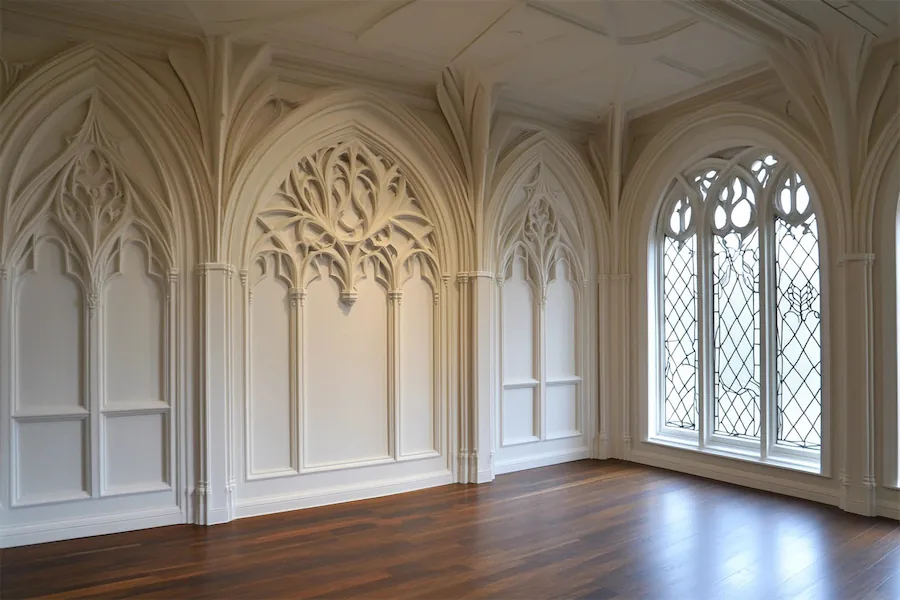Gothic Revival wall designs emerged in the late 18th century as part of the broader Gothic Revival architectural movement, which sought to revive medieval Gothic aesthetics. This style is characterized by elements such as pointed arches, intricate detailing, and a vertical emphasis, all contributing to a sense of grandeur and drama.
History and Origins of Gothic Revival Wall Designs
The Gothic Revival movement began in England during the 18th century, as architects and designers sought to evoke the spiritual and romantic qualities of medieval Gothic architecture. Walls in Gothic Revival structures often featured decorative elements like pointed arches and intricate tracery, reflecting the style’s emphasis on ornate detailing.
Key Features of Gothic Revival Wall Designs
Gothic Revival wall designs are distinguished by several key features:
- Pointed Arches: Incorporated into wall openings and decorative niches, these arches contribute to the vertical emphasis typical of the style.
- Intricate Tracery: Delicate stone or woodwork patterns adorn walls, especially around windows and doorways, adding to the ornate appearance.
- Decorative Moldings: Elaborate moldings and carvings embellish wall surfaces, often featuring motifs like trefoils and quatrefoils.
- Vertical Lines: Design elements that draw the eye upward, enhancing the perception of height and grandeur.
Applications of Gothic Revival Wall Designs
Gothic Revival wall designs have been applied in various contexts, including:
- Religious Buildings: Churches and cathedrals feature walls adorned with pointed arches and tracery, creating a sense of reverence and awe.
- Residential Architecture: Homes incorporate Gothic Revival elements like decorative moldings and arched windows to convey elegance and historical charm.
- Institutional Structures: Universities and government buildings utilize Gothic Revival walls to project authority and tradition.
Considerations When Choosing Gothic Revival Wall Designs
When selecting Gothic Revival wall designs, consider the following:
- Material Authenticity: Use traditional materials like stone and wood to maintain historical accuracy and achieve the desired aesthetic.
- Craftsmanship: The intricate details require skilled artisans to execute properly, ensuring the quality and longevity of the design.
- Contextual Harmony: Ensure that the Gothic Revival elements complement the overall architectural style of the building and its surroundings.
Conclusion
Gothic Revival wall designs offer a timeless and dramatic aesthetic that continues to captivate. By incorporating elements like pointed arches, intricate tracery, and decorative moldings, these designs infuse spaces with historical richness and architectural elegance.
